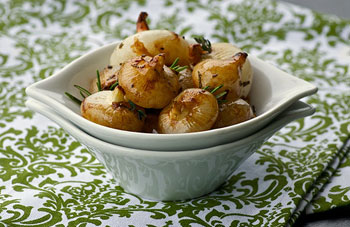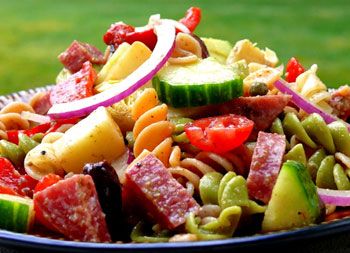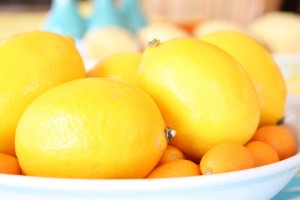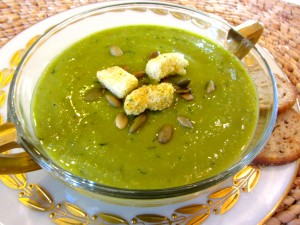 Onions have their place. I wouldn't dream of starting a marinara sauce without sauteed shallots. Nearly every soup I make starts with sauteed brown onions. Red onions enliven fruit salsas, and scallions add depth to guacamole. And let's face it, a bratwurst without grilled Vidalia onions is a crime.
Onions have their place. I wouldn't dream of starting a marinara sauce without sauteed shallots. Nearly every soup I make starts with sauteed brown onions. Red onions enliven fruit salsas, and scallions add depth to guacamole. And let's face it, a bratwurst without grilled Vidalia onions is a crime.
What about cippoline onions? Believe it or not, they've never even visited my kitchen, that is, until a few weeks ago. Now, they're nestled in the onion basket alongside my beloved shallots and brown onions.
Why this sudden change of heart toward cippoline onions? It's because of Frieda. I'm unable to resist her charms, and if you taste her cippoline onions, you'll find yourself equally captivated.
These cippoline onions are from Frieda's Inc., The Specialty Produce People. I've had the pleasure to do some recipe development with Frieda's and have tasted many of their products from onions and potatoes to pine nuts and dried cranberries. The cippoline onions are wonderful.

 Who doesn't love a good tangy pasta salad? I have tried many, many recipes over the years and I have to say I like the idea of antipasto meets pasta salad.
Who doesn't love a good tangy pasta salad? I have tried many, many recipes over the years and I have to say I like the idea of antipasto meets pasta salad. Spying bright yellow Meyer lemons in the refrigerated produce case at my local natural food co-op never fails to give me a lift. This occurrence usually takes place in March, my least favorite month of the year in northern Minnesota with its dull gray skies, dirty slush, and sometimes, snowstorms that, by this time, no one wants to experience.
Spying bright yellow Meyer lemons in the refrigerated produce case at my local natural food co-op never fails to give me a lift. This occurrence usually takes place in March, my least favorite month of the year in northern Minnesota with its dull gray skies, dirty slush, and sometimes, snowstorms that, by this time, no one wants to experience. Who doesn’t love Spring? With days growing longer, buds turning into blooms and winter produce giving way to spring’s greens, it’s the season of re-birth and renewal.
Who doesn’t love Spring? With days growing longer, buds turning into blooms and winter produce giving way to spring’s greens, it’s the season of re-birth and renewal. I've always been a big Globe artichoke kind of girl. That was until a couple of years ago when I tried baby artichokes. Now, I have learned to divide my love between them both.
I've always been a big Globe artichoke kind of girl. That was until a couple of years ago when I tried baby artichokes. Now, I have learned to divide my love between them both.